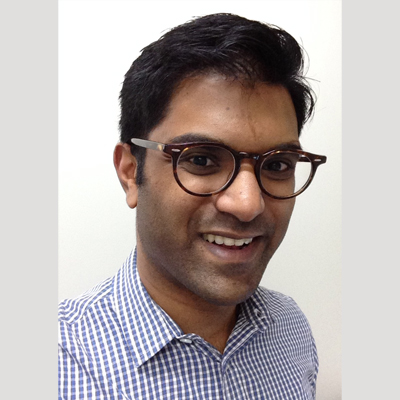| Indy Sandaradura shares how through the development of antimicrobial assays and new user-friendly Bayesian tools they have been able to improve clinical outcomes at his centre. Indy has worked very hard to ensure Young Scientists will have an excellent time at the congress through YS social and networking activities, and will co-chair the Young Scientist Symposium on Wednesday (see preliminary program).
Indy Sandaradura
Infectious Diseases Physician and Clinical Microbiologist, Westmead Hospital
Clinical Senior Lecturer, University of Sydney, AU |
Can you tell us a little bit about your respective roles? What is a typical day like for you?
I am an Infectious Diseases Physician, a Clinical Microbiologist and an academic so my time is split between patient care, laboratory management, teaching and research in antimicrobial TDM/pharmacometrics. I am fortunate that because of all the different things that I do, no two days are the same!
Is there anything that your laboratory does, or that is done at your hospital or centre, that you would consider innovative?
Antimicrobial TDM and Bayesian adaptive dosing of antimicrobials, though well-established is still not in widespread clinical use. We are fortunate to have access to a wide range of assays and Bayesian tools at our centre, where we work on implementing TDM science into practice.
Our laboratory is also particularly interested in the combination of drugs to increase efficacy and prevent antimicrobial resistance.
What technological innovations have entered into use during your career that have permitted a change, or evolution, in practice?
The availability of antimicrobial assays for both research and clinical use has increased dramatically during my career. Additionally, new user-friendly Bayesian tools have also become available. These changes have not only allowed us to better understand the pharmacokinetics of antimicrobials in ‘real-world’ clinical settings, they have also facilitated the translation of research findings back into clinical practice.
How did you become interested in your area of expertise?
I’ve been interested in Infectious Diseases since I was a student, but it wasn’t until later when antimicrobial assays became more widely available that it became apparent to me how much inter- and intra-individual variability there was in drug exposure, even with antimicrobials previously considered to be ‘predictable’. Seeing patients have poor outcomes from their infections and a desire to improve this drove my interest in TDM and pharmacometrics.
Is there anything that you’ve seen or heard about recently and thought “I’d like to incorporate that idea at my center”?
Robust and rapid in-vitro testing of antimicrobial drug combinations.
What sort of research do you have on the horizon that you think might influence clinical practice in the future?
Many barriers to the optimal use of TDM in clinical settings are behavioural. Through better understanding these we hope to enable better use of TDM to benefit patients with infections.
What do you consider is the future for TDM and CT? What are you excited about? What are the challenges we face?
The future is the effective translation of PK/PD knowledge to the bedside and directly impact patient care. I am excited about the increasing availability of drug assays and Bayesian tools to allow this to happen. The challenge that we face is to provide a high-quality and timely service to support non-experts at the bedside of patients whilst demonstrating this to be cost-effective.
The content of the IATDMCT Blog does not necessarily have the endorsement of the Association.



